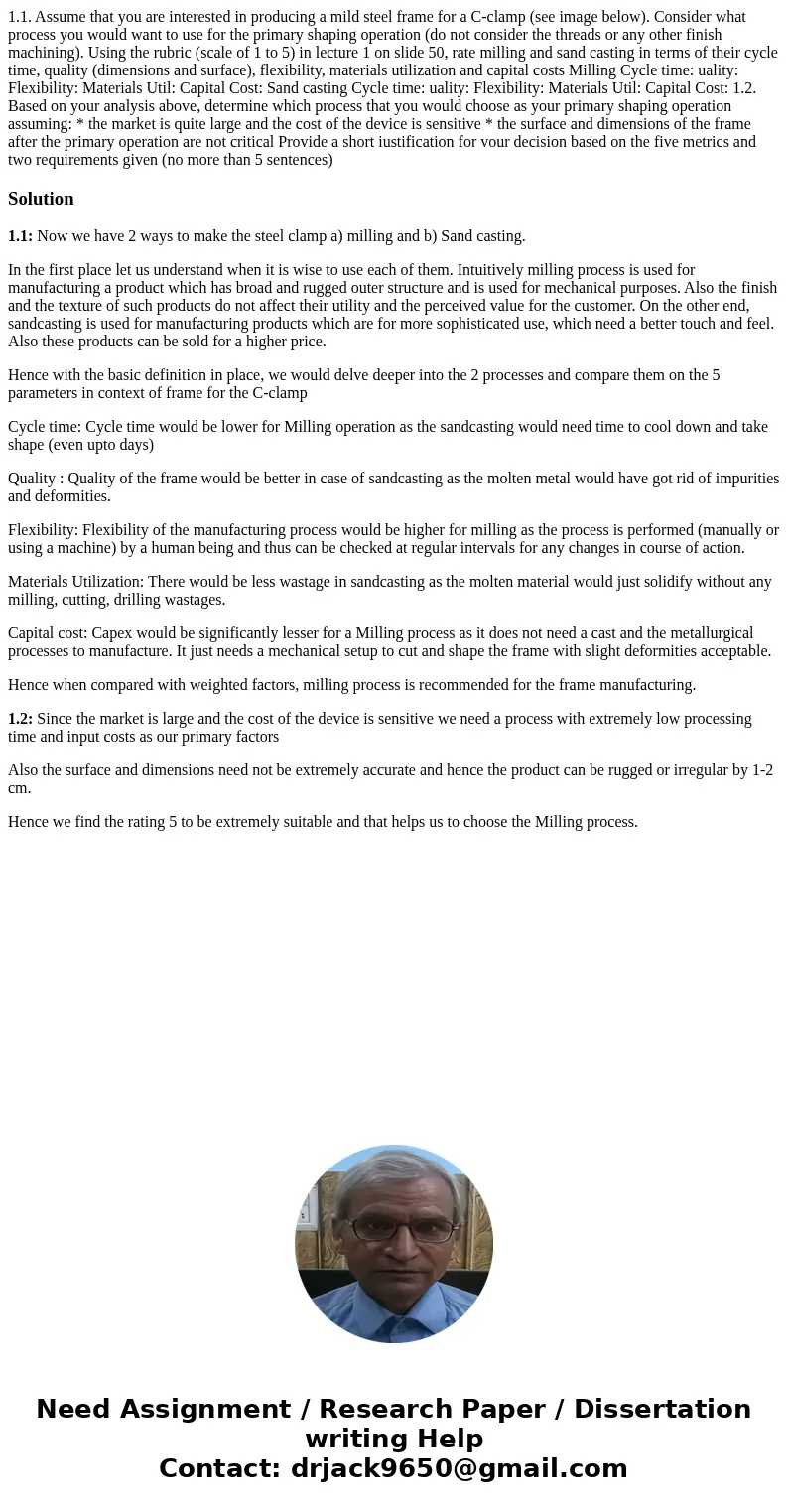11 Assume that you are interested in producing a mild steel
Solution
1.1: Now we have 2 ways to make the steel clamp a) milling and b) Sand casting.
In the first place let us understand when it is wise to use each of them. Intuitively milling process is used for manufacturing a product which has broad and rugged outer structure and is used for mechanical purposes. Also the finish and the texture of such products do not affect their utility and the perceived value for the customer. On the other end, sandcasting is used for manufacturing products which are for more sophisticated use, which need a better touch and feel. Also these products can be sold for a higher price.
Hence with the basic definition in place, we would delve deeper into the 2 processes and compare them on the 5 parameters in context of frame for the C-clamp
Cycle time: Cycle time would be lower for Milling operation as the sandcasting would need time to cool down and take shape (even upto days)
Quality : Quality of the frame would be better in case of sandcasting as the molten metal would have got rid of impurities and deformities.
Flexibility: Flexibility of the manufacturing process would be higher for milling as the process is performed (manually or using a machine) by a human being and thus can be checked at regular intervals for any changes in course of action.
Materials Utilization: There would be less wastage in sandcasting as the molten material would just solidify without any milling, cutting, drilling wastages.
Capital cost: Capex would be significantly lesser for a Milling process as it does not need a cast and the metallurgical processes to manufacture. It just needs a mechanical setup to cut and shape the frame with slight deformities acceptable.
Hence when compared with weighted factors, milling process is recommended for the frame manufacturing.
1.2: Since the market is large and the cost of the device is sensitive we need a process with extremely low processing time and input costs as our primary factors
Also the surface and dimensions need not be extremely accurate and hence the product can be rugged or irregular by 1-2 cm.
Hence we find the rating 5 to be extremely suitable and that helps us to choose the Milling process.

 Homework Sourse
Homework Sourse